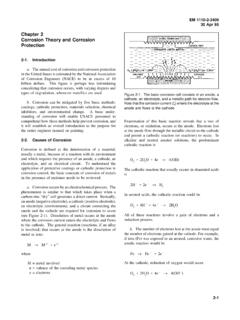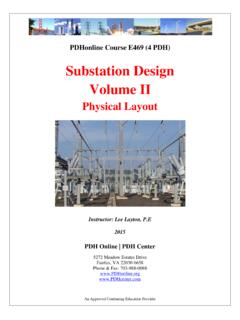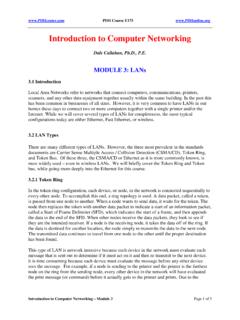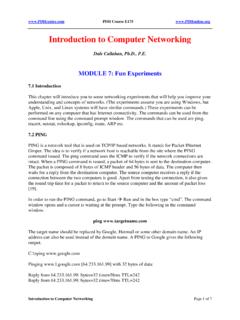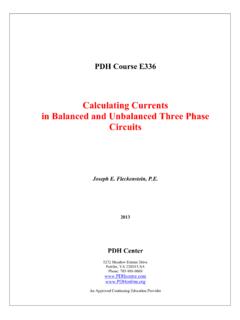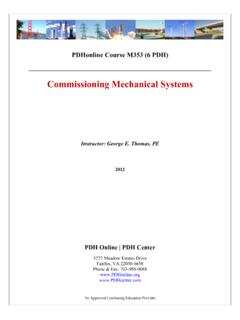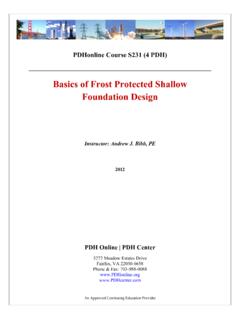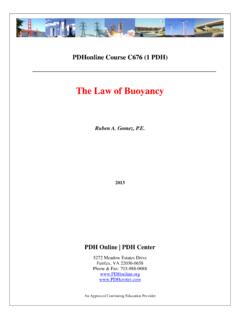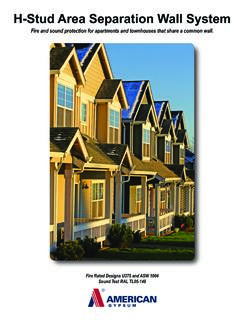Transcription of Cold-Formed Steel Shear Wall Design
1 PDHonline Course S102 (4 PDH) Cold-Formed Steel Shear Wall Design2020 Instructor: John C. Huang, , PEPDH Online | PDH Center5272 Meadow Estates DriveFairfax, VA 22030-6658 Phone: Approved Continuing Education ProviderShear WallDesign GuidePublication RG-9804 February 19981726 M Street, NW, Suite 601 Washington, DC 20036-45231-800-79-STEELC opyright 1998 by the American Iron and Steel Institute1 The following publication was developed by Brockenbrough & Associates for theAmerican Iron and Steel Institute (AISI), In the production of this publication, due diligencehas been exercised in consulting a wide range of pertinent authorities and have been made to present accurate, reliable and useful information.
2 AISI acknowledges the principal author of this publication, Roger Brockenbrough and materials set forth herein are for general information purposes only. They are not tosubstitute for competent professional assistance. Application of this information to specificprojects or settings should be reviewed by a qualified individual. In some or all jurisdictions,such review is required. Anyone making use of the information set forth herein does so athis or her own risk and assumes any resulting OverviewIn residential construction, Steel studs and track are generally covered with claddingto form a wall assembly with significant Shear strength. It is common Design practiceto use this wall Shear strength to resist lateral loads, such as those caused by windand document includes information on walls constructed with (1.)
3 Plywood andoriented strand board (OSB) on the exterior wall surface, with or without gypsum wallboard (GWB) on the interior wall surface, (2.) GWB on both surfaces, (3.) steelsheathing on one side, and (4.) Steel X-bracing on one side. Most of this information isbased on 3-1/2 x 1-5/8 in. studs, and attachment to the studs and track with self drillingscrews. Limited information is included on walls with 6 x 1-5/8 in. studs sheathed withplywood, OSB, GWB, and with Steel X-bracing; and on walls with sheathing attachedby pneumatically driven pins. Additional information on sheathing attached bypneumatically driven pins is available from strength of a wall system depends on the interaction of many factors includingthe strength of the sheathing; the type, size, and spacing of the fasteners used toattach the sheathing; the panel aspect ratio (ratio of long to short dimension of shearpanel); and the strength of the studs.
4 Because of these variables, the Design strengthof Shear walls is usually based on tests of full height specimens. Thus, this documentprovides a summary of the results obtained in wall tests conducted by Serrette (1997,1996, and 1994) and Tissell (1993). Of course, to develop the Shear strength values, walls must be provided with anchors designed to resist the Shear and uplift forces thatare has been common practice to base Shear wall Design values on the results ofstatic tests. However it is well known that earthquakes can cause severe cyclicloadings. Wind also causes repeated load applications, although usually not at peakload levels. Static test results have been used because it was not considered practicalto conduct large scale cyclic testing.
5 However, tests conducted by Serrette (1996 and1997) involved a significant number of cyclic tests. Consequently it is now possible tomore rationally address Shear wall Design in high seismic Shear Wall Design DataTables 1, 2, and 3 give nominal (ultimate) strengths for the Design of Shear wallswith Cold-Formed Steel framing. As indicated, some of the values have been approvedby national codes while more recent values are proposed for inclusion. The approvedvalues have been accepted in the following codes: SBC, 1997; UBC, 1997; BOCA,1999; IBC, current draft. Appendix Tables A1, A2, and A3 give test references for thevalues in Tables 1, 2, and values in Tables 1 through 3 must be divided by a safety factor (for AllowableStress Design ) or multiplied by a reduction factor (for Load and Resistance FactorDesign).
6 See the pertinent building codes for complete requirements. In the absenceof other requirements, consider the following: Seismic, = or = ; Wind, = or = These values correspond to those given by AISI for Steel diaphragmconstruction with mechanical fasteners (see Specification for the Design of Cold-Formed Steel Structural Members, American Iron and Steel Institute, 1996).Table 1 is for wind loads and Table 3 is for seismic loads. Generally, for similar wallconstruction, the test values used to derive the wind load table are higher than the testvalues used to derive the table for seismic loads (Table 3). Thus, for cases that arenot covered for wind loads (Table 1) but are covered for seismic loads (Table 3), it isconservative to use Table 3 for wind loads.
7 Table 2 is for walls sheathed with GWB onboth sides and is applicable to wind loads only. Maximum aspect ratios are asindicated. It is important to note that, as the aspect ratio increases, it is essential toproperly tighten hold-downs and remove slack to minimize 1 includes walls sheathed with plywood or OSB on one side; the OSB valuesare conservative where plywood values are not shown. For the 6/12 in. spacing, thestrength can be increased by 30 percent if GWB is added to the opposite side of thewall. Table 1 also includes walls sheathed with Steel sheet on one side. Table 3 isfor seismic loads resisted by walls sheathed with plywood, OSB, or Steel sheet, asindicated, on one side 1 through 3 are for walls with Steel studs spaced at no more than 24 in.
8 Oncenters. The studs must be doubled at the Shear wall ends. Except where indicatedotherwise, minimum stud size is 3-1/2 x 1-5/8 x in. and minimum track size is 3-1/2 x 1-1/4 x in. (minimum metal base thicknesses). In Table 3, thicknesses are indicated for certain cases. In all cases, for seismic Design in Zones 3 and4, the stud and track thickness should not exceed panel edges must be fully blocked. Horizontal Steel straps used as blockingmust be a minimum of 1-1/2 in. wide and of the same material and thickness as thestuds and track. Boundary members and anchorage details for uplift must haveadequate strength to resist the forces resulting from the load combinations imposed bythe building code.
9 Panels must be at least 12 in. wide, such as when needed tocomplete a wall. No code values are proposed for Steel X-bracing because, as confirmed by themost recent tests (Serrette, 1997), it can be designed directly for the imposed , the Design must address two important considerations. First, because thematerial yield strength is typically greater than the specified minimum value, endconnections must be designed to withstand a brace force greater than thatcorresponding to the minimum specified material yield strength. Second, flat strapbracing on one side of a wall causes an eccentric loading on tracks and chord (end)4studs; this eccentricity must be considered in Design , particularly in high Shear Wall Tests by Serrette (1997) on walls with 3-1/2 x 1-5/8 in.
10 StudsBoth static and cyclic load tests were conducted on walls with 3-1/2 x 1-5/8 studsspaced at 24 in. Double studs (back-to-back) were used at the ends of the included panels with APA rated sheathing (OSB or plywood, vertical), Steel X-bracing, and Steel sheet sheathing. The sheathing or bracing was placed on only oneside of the panels. The tests were planned to answer remaining questions on OSBand plywood sheathed walls , to obtain Design data for panels with high aspect ratios,and to obtain Design data for walls with Steel X-bracing or Steel TestsThe test setup was essentially the same as that used for earlier tests as describedbelow under except that the loading rate was decreased to approximately Studs were in.
